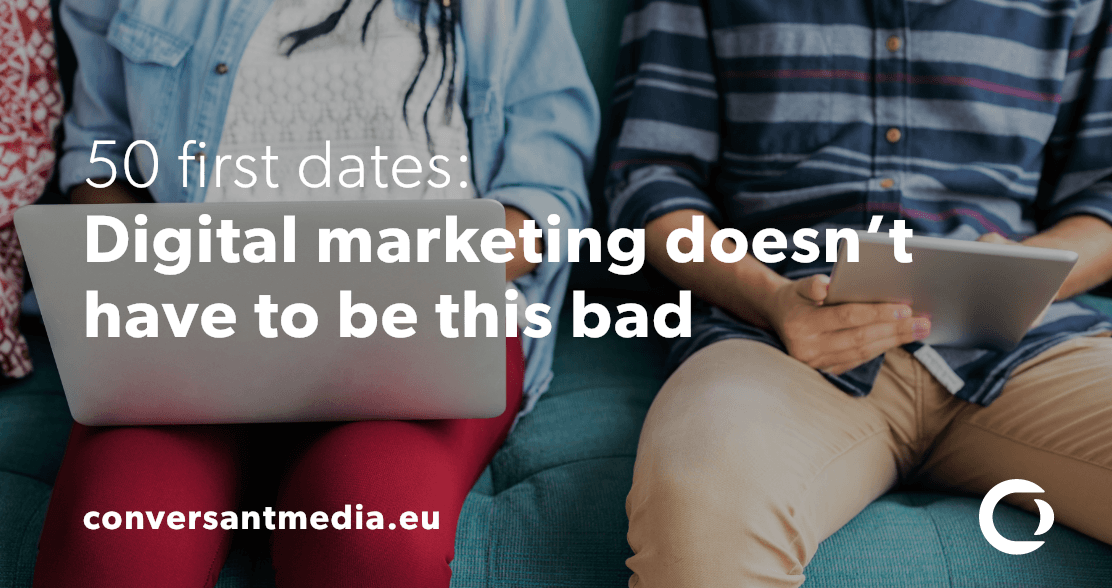



We’ve all been victims of bad digital marketing. It happens every day, on every publisher site.
You know the drill: you visit a site to browse a product. Let’s say, running shoes. You look at several pairs, including a blue pair of New Balances. It’s a model you’ve purchased before in their store but aren’t ready to buy again just yet.
Moments later, you see a different model, a red pair, in an advertisement. It’s a model you browsed but weren’t interested in at all. For the next 2–4 weeks, you’re stalked by those red running shoes.
Marketers spend billions doing just this, stalking consumers. It’s incredibly inefficient, and it’s detrimental to the brand by annoying, creeping out and pushing consumers to the competition.
It reminds me of the movie 50 First Dates. The Drew Barrymore character has no short-term memory, and every time she sees the Adam Sandler character, she starts all over by introducing herself.
When digital marketing is successful, it’s like having a meaningful conversation with a best friend. You know all about your friend, and your conversation picks up where you left off.
Three fundamentals must be in place to create these engagements:
So why does most marketing feel like 50 First Dates? Because of three fundamental mistakes that prevent marketers from delivering true one-to-one experiences.
Most brands rely on five or six point solutions, with separate vendors for data onboarding, audience building, cross-device recognition, dynamic creative, media buying, and measurement. This leads to lack of scale, lack of real-time person-level execution, media inefficiency and flawed measurement.
Marketers treat the prospect/customer funnel in a very broken way. Top-of-funnel (acquisition) campaigns aren’t coordinated with the bottom (typically retargeting). The reality is, prospects and customers move around the funnel fluidly, and marketers should base their conversations on people’s current funnel status.
Marketers continue to budget for and treat mobile, social, video, display, email and search as separate line items. They think media channel first, rather than placing people at the centre and calibrating for personal preferences, device, publisher and time of day.
So how do you fix this, and have more meaningful conversations with everyone?
Focus on the following:
If your current ad-tech solutions don’t reach people as individuals and own the chain of custody throughout the process, you’re likely giving your customers that 50 First Dates experience. It's bad digital marketing.
There’s a better way to meaningful conversations. There’s a better way to relationship building, which ultimately translates into new customers and revenue growth.